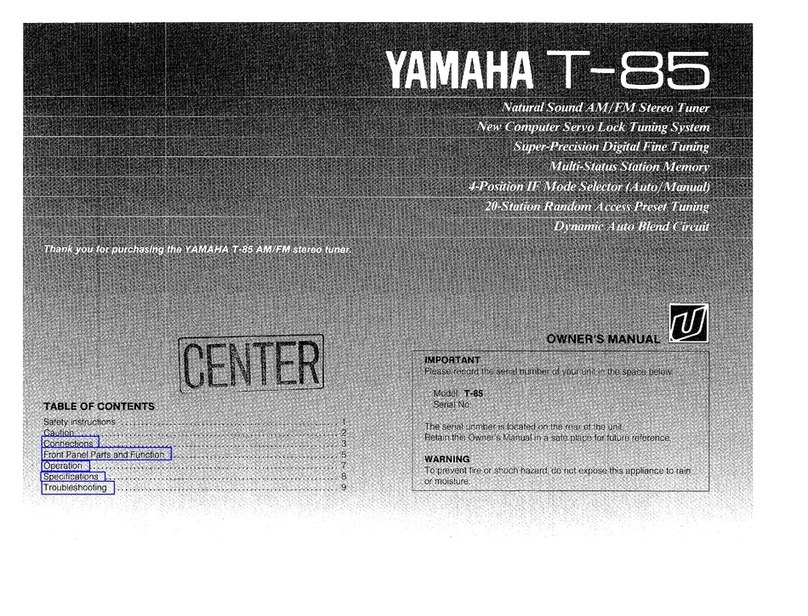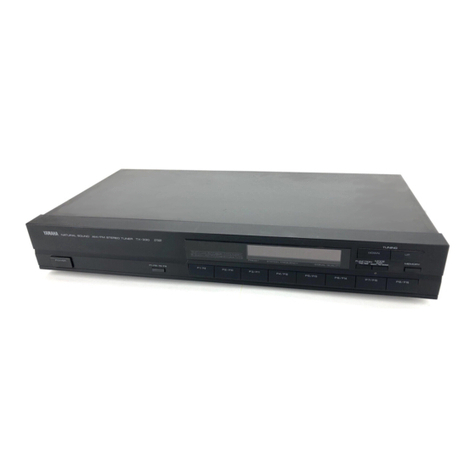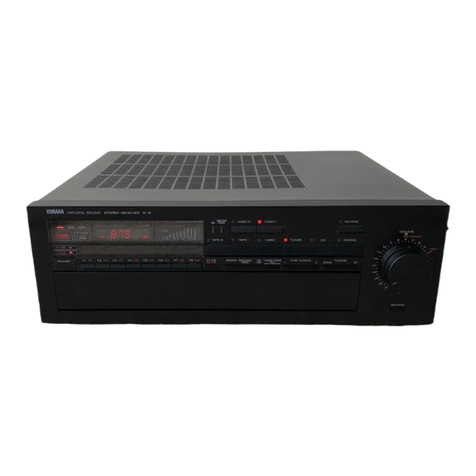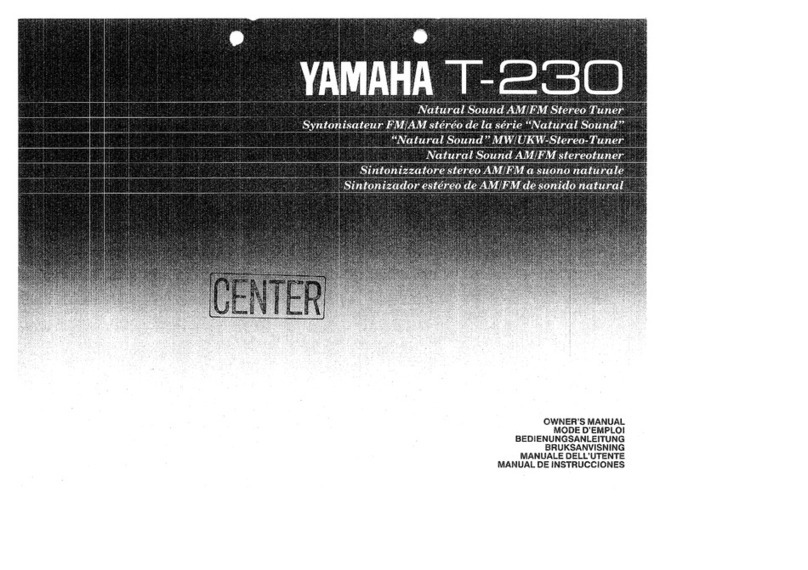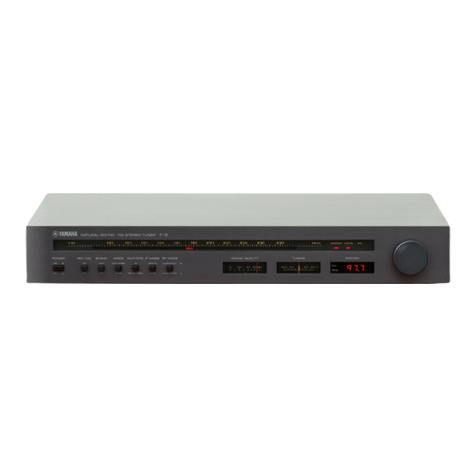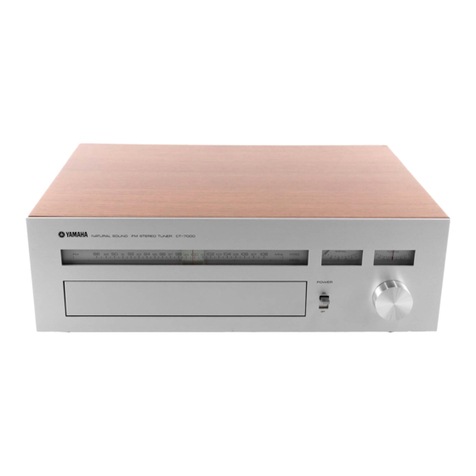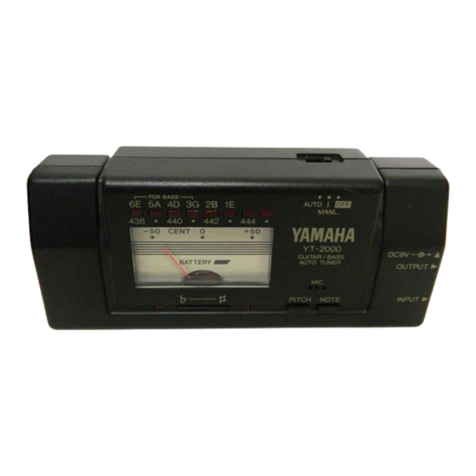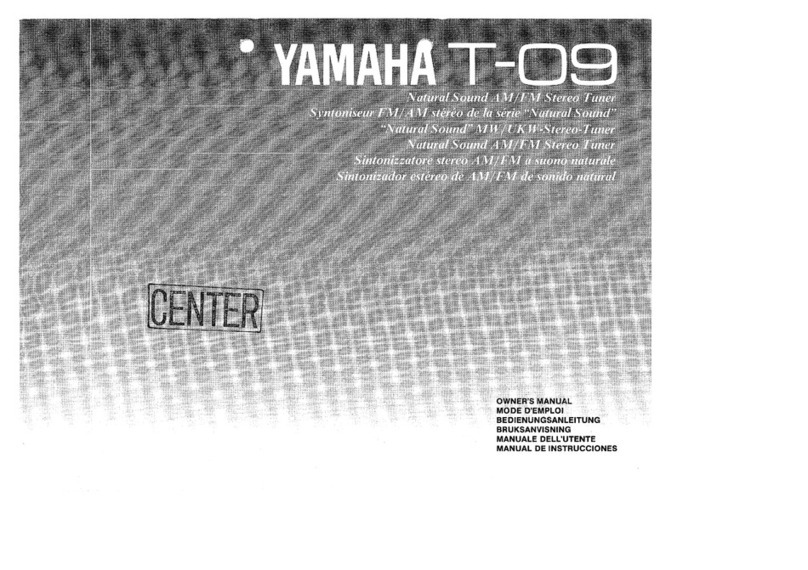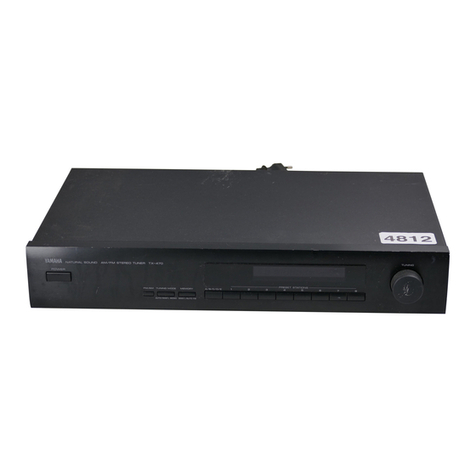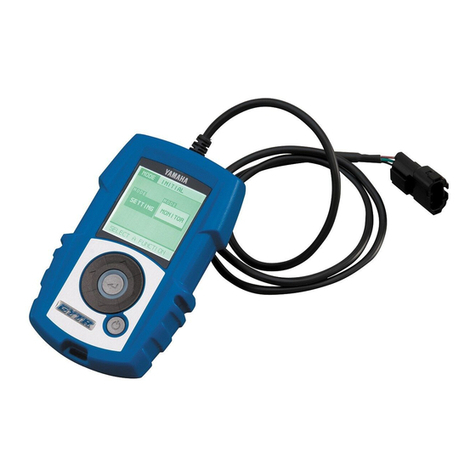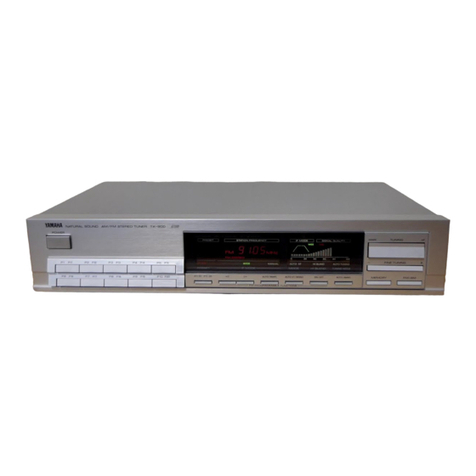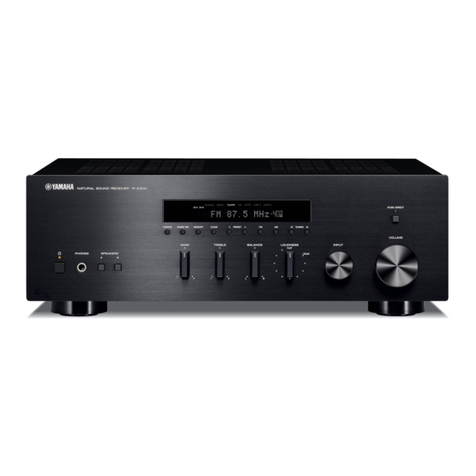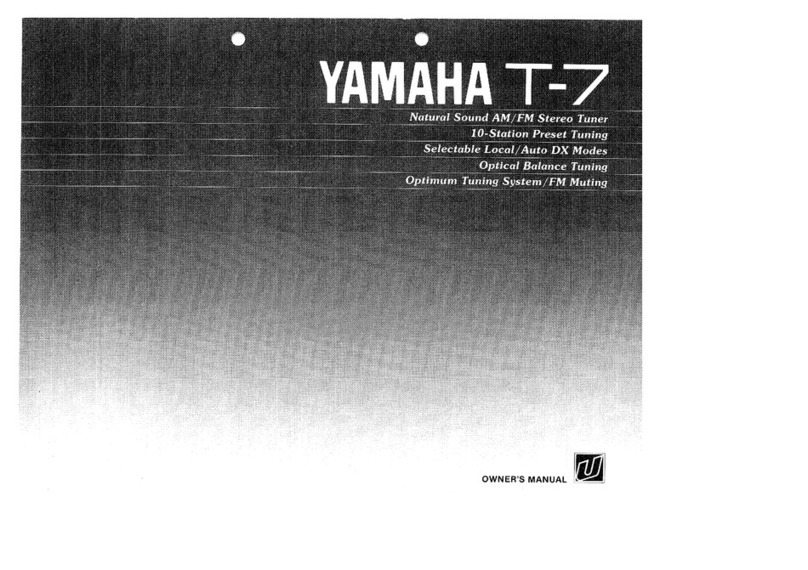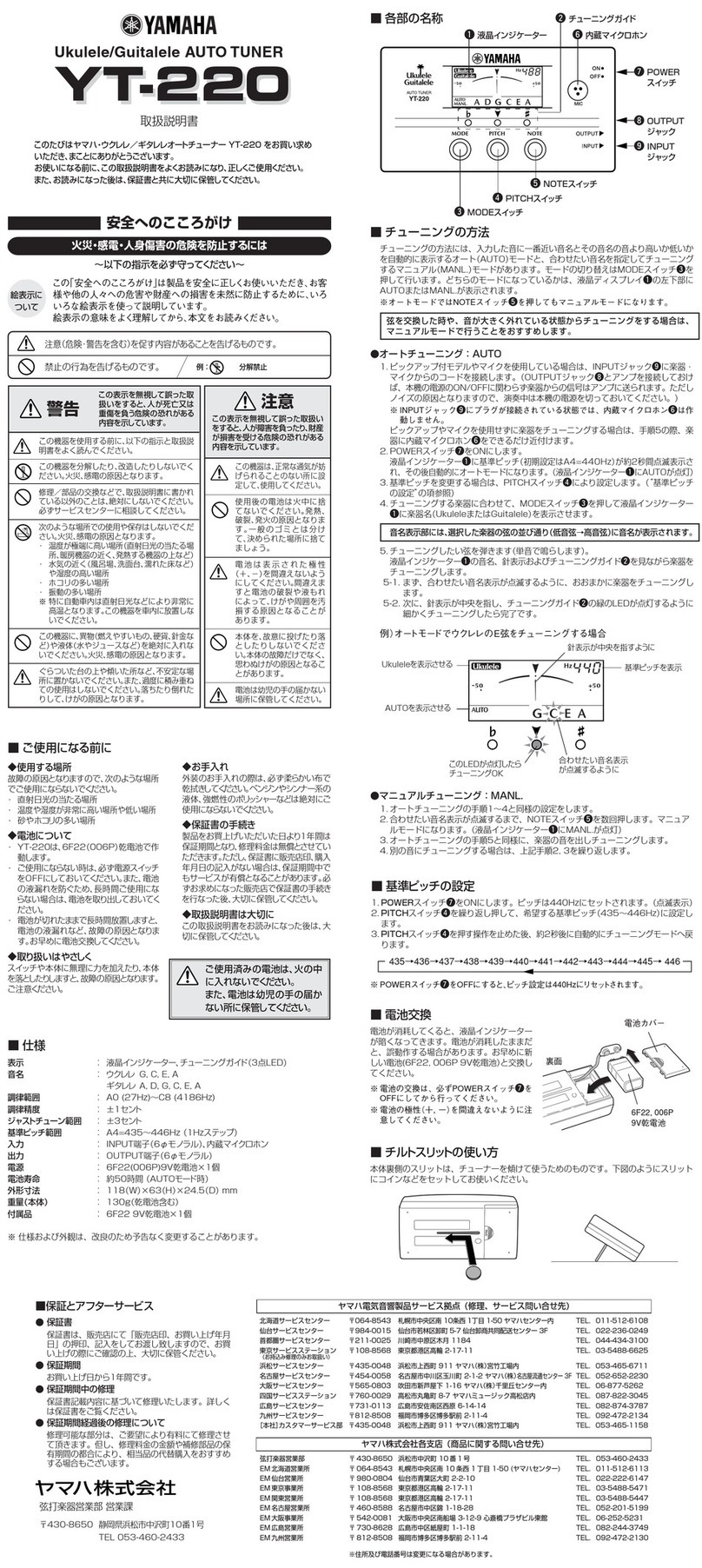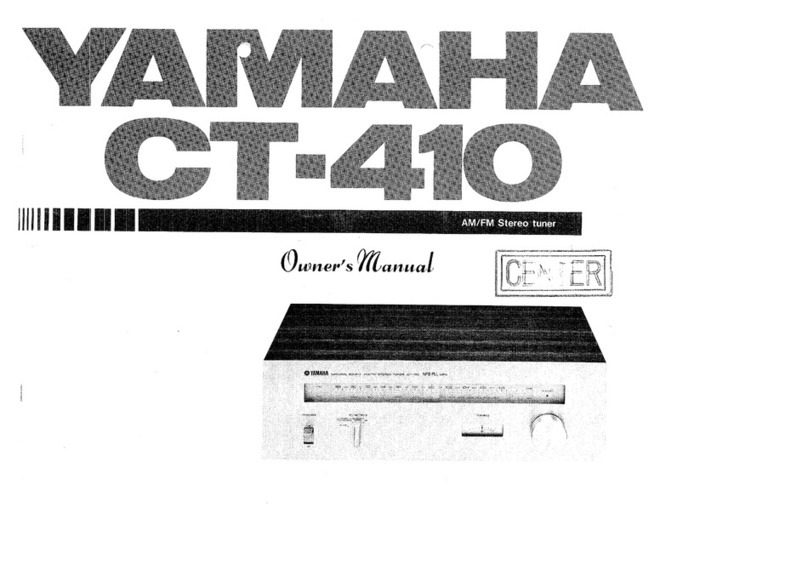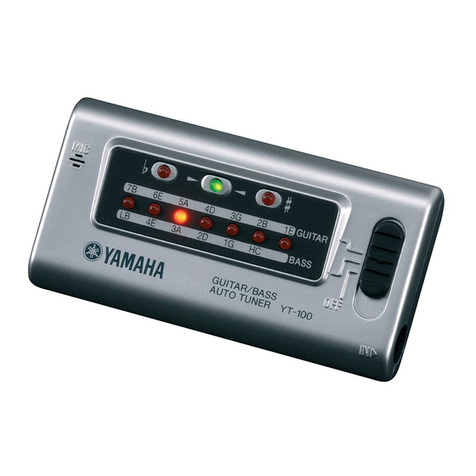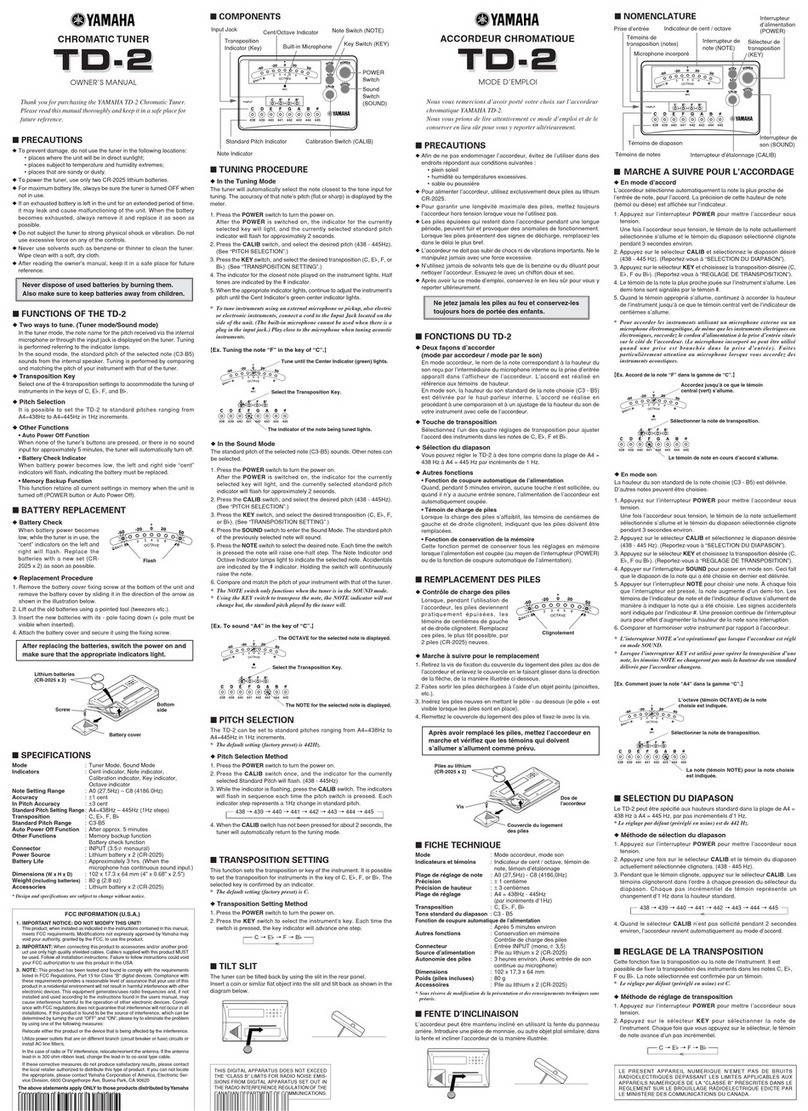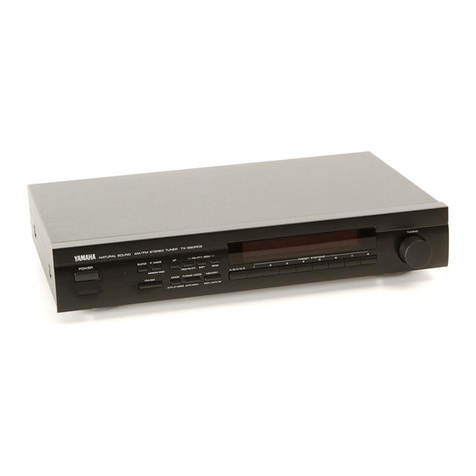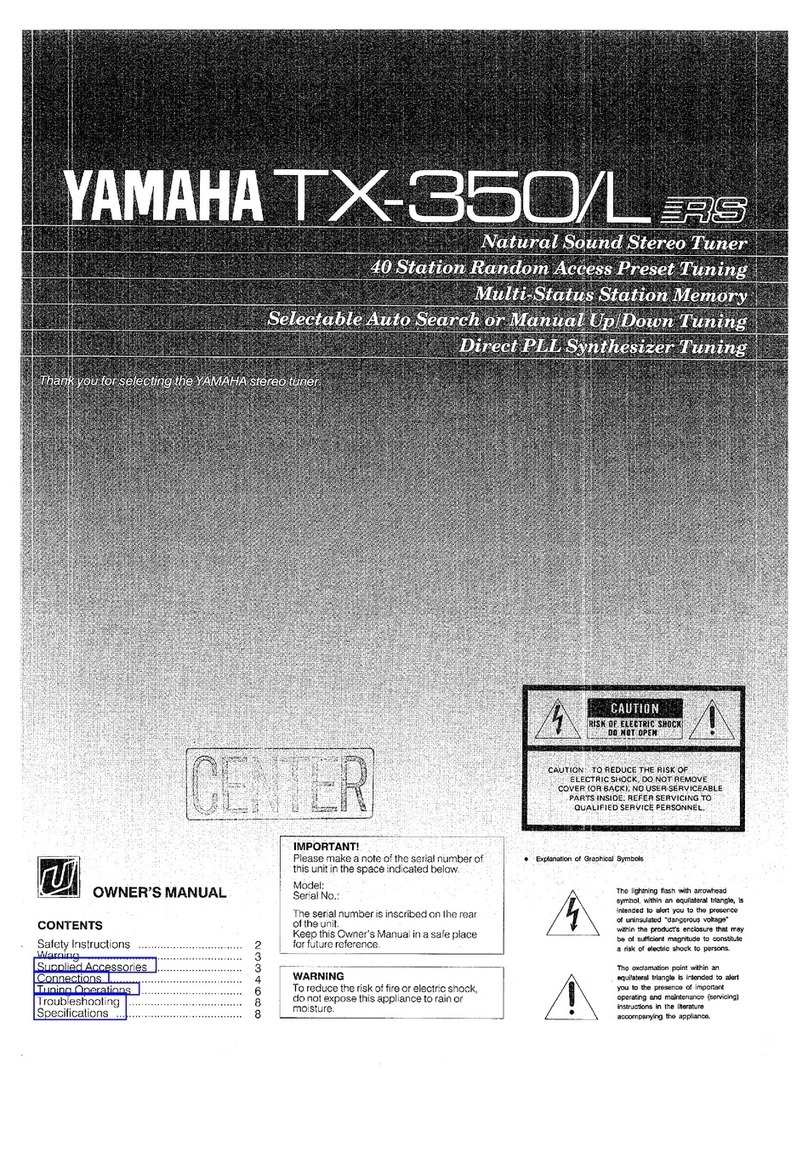
Thank you for purchasing the YAMAHA YT-2100 Guitar/
Bass Auto Tuner.
Please read this manual thoroughly and keep it in a
safe place for future reference.
FCC INFORMATION (U.S.A.)
1. IMPORTANT NOTICE: DO NOT MODIFY THIS UNIT!
This product, when installed as indicated in the instructions contained in this manual, meets FCC
requirements. Modifications not expressly approved by Yamaha may void your authority, granted by
the FCC, to use the product.
2. IMPORTANT:
When connecting this product to accessories and/or another product use only high quality
shielded cables. Cable/s supplied with this product MUST be used. Follow all installation instructions.
Failure to follow instructions could void your FCC authorization to use this product in the USA.
3. NOTE:
This product has been tested and found to comply with the requirements listed in FCC Regula-
tions, Part 15 for Class ”B” digital devices. Compliance with these requirements provides a reasonable
level of assurance that your use of this product in a residential environment will not result in harmful
interference with other electronic devices. This equipment generates/uses radio frequencies and, if not
installed and used according to the instructions found in the users manual, may cause interference
harmful to the operation of other electronic devices. Compliance with FCC regulations does not guar-
antee that interference will not occur in all installations. If this product is found to be the source of
interference, which can be determined by turning the unit ”OFF” and ”ON”, please try to eliminate the
problem by using one of the following measures:
Relocate either this product or the device that is being affected by the interference.
Utilize power outlets that are on different branch (circuit breaker or fuse) circuits or install AC line filter/s.
In the case of radio or TV interference, relocate/reorient the antenna. If the antenna lead-in is 300 ohm
ribbon lead, change the lead-in to co-axial type cable.
If these corrective measures do not produce satisfactory results, please contact the local retailer
authorized to distribute this type of product. If you can not locate the appropriate, please contact
Yamaha Corporation of America, Electronic Service Division, 6600 Orangethorpe Ave, Buena Park, CA
90620
The above statements apply ONLY to those products distributed by Yamaha Corporations of America or
its subsidiaries.
THIS DIGITAL APPARATUS DOES NOT EXCEED THE “CLASS B” LIMITS FOR RADIO NOISE EMISSIONS FROM
DIGITAL APPARATUS SET OUT IN THE RADIO INTERFERENCE REGULATION OF THE CANADIAN DEPARTMENT
OF COMMUNICATIONS.
Bij dit produkt zijn batterijen geleverd. Wanneer
deze leeg zijn, moet u ze niet weggooien maar
inleveren als KCA.
■TUNING PROCEDURES
●Auto Tuning (AUTO)
In AUTO mode, the tuner will automatically select the note closest to
the tone input for tuning. This is convenient for tuning during musical
performances.
1. For electric guitars and basses, connect the guitar cord to the INPUT
jack i. (At this time, the OUTPUT jack ocan be connected to an
amplifier in preparation for tuning during a performance.) For acoustic
guitars, place the guitar sound hole near the built-in microphone u.
*The built-in microphone ucannot be used when there is a plug in the
INPUT jack i.
2. Turn the power switch qto the “AUTO” position.
3. If desired, press the pitch switch eto select the standard A4 pitch.
(Refer to the Pitch Selection section for details.)
4. Pluck the string to be tuned. The appropriate indicator ywill light
up for the tuning note. (Do not pluck two or more strings at the time.)
5. If the wrong indicator light is on, adjust the guitar tuning peg until the
correct light comes on.
6. Continue to adjust the tuning
peg until the VU meter r
needle rests in the middle (“0
cent”). If the note is flat, the
left tuning guide (W) will light.
If the note is raised, the right
tuning guide (Q) will light.
Adjust accordingly until both
tuning guides (W,Q) are lit.
At this point, the string is
correctly tuned.
7. Repeat steps 4 through 6 to tune the other strings.
●Manual Tuning (MANL)
In MANL mode, each note must be individually selected as needed.
This mode is most commonly used to tune instruments before musical
performances.
1. Similar to AUTO mode, connect the electric guitar or bass cord to
the INPUT jack i. For acoustic guitars, place the guitar sound hole
near the built-in microphone u.
2. Turn the power switch qto the “MANL” position.
3. If desired, press the pitch switch eto select the standard A4 pitch.
(Refer to the Pitch Selection section for details.)
4. Press the note switch wto select the desired tuning note. The
indicators yfor the tuning notes will light in sequence (as shown in
the pattern below) each time the note switch is pressed.
6E →5A →4D →3G →2B →1E
5. Adjust the tuning peg until the VU meter rneedle rests in the
middle (“0 cent”). If the note is flat, the left tuning guide (W) will
light. If the note is raised, the right tuning guide (Q) will light. Adjust
accordingly until both tuning guides (W,Q) are lit. At this point, the
string is correctly tuned.
6. Repeat steps 4 and 5 to tune the other strings.
GUITAR/BASS AUTO TUNER
YT-2100
OWNER’S MANUAL
■PRECAUTIONS
◆To prevent damage, do not use the tuner in the following locations:
• places where the unit will be in direct sunlight;
• places subject to temperature and humidity extremes;
• places that are sandy or dusty.
◆To power the tuner, use only a 6F22 or 006P 9V dry cell battery or
an optional YAMAHA AC-05UC or AC-320UC AC Adaptor. Other
power sources may damage the device.
*Before connecting the AC adaptor, make sure that the polarities of
the plug and the jack match ( – + ).
◆For maximum battery life, always be sure the tuner is turned OFF
when not in use.
◆To prevent possible damage due to leakage of battery fluid, remove
the battery from the tuner if it is not to be used for an extended
period of time.
◆Do not subject the tuner to strong physical shock or vibration. Do not
use excessive force on any of the parts.
◆Never use solvents such as benzine or thinner to clean the tuner.
Wipe clean with a soft, dry cloth.
uMICROPHONE
tTUNING GUIDES yINDICATORS
iINPUT JACK
oOUTPUT JACK
!0 DC 9V JACK
qPOWER SWITCH
ePITCH SWITCH
wNOTE SWITCH
rVU METER
■COMPONENTS
■SPECIFICATIONS
Indicators : VU Meter, Indicator
LEDs,Tuning Guides
Tuning Notes : 6E, 5A, 4D, 3G, 2B, 1E
VU Meter Precision : ±1 cent
Standard Pitch Range
: A4 = 438 Hz — 445 Hz
(1 Hz steps)
Added Function : Battery Check
Jacks : INPUT, OUTPUT, DC 9V
Power Source : 9V dry cell battery
(006P or 6F22) or YAMAHA
AC adaptor (AC-05UC or AC-
320UC)
Battery Life :Approx. 9 hours
Dimensions : 155 x 48.5 x 32.5 mm
(WxHxD) (6-1/8" x 1-15/16" x 1-1/4")
Weight : 159 g (5.6 oz) with battery
Accessory : 9V dry cell battery (6F22) x 1
*Specifications and external appearance are subject to change without
notice.
■BATTERY CHECK
For about 2 seconds after switching the power from “OFF” to “AUTO”
or “MANL”, the VU meter needle will indicate the charge remaining in
the battery. If the needle rests to the left of the battery check bar (refer
to Figure 1 below), the battery needs to be replaced.
As an additional check, if the battery runs low while the tuner is in use,
both tuning guide indicators (W,Q) will flash indicating that the battery
must be replaced.
For convenience, the tuner has a DC 9V jack; please use an optional
YAMAHA AC adaptor (AC-05UC or AC-320UC) wherever possible.
●Battery Change
The battery compartment is in the rear of the tuner. Remove the old
battery and replace it with a new one of the same type. Be careful to
connect the battery in the correct polarity.
*Always turn the power switch qto “OFF” before changing the battery
or connecting an AC adaptor.
(Figuare 2)(Figuare 1)
OKLOW
■PITCH SELECTION
Recently, it has become common to slightly raise the standard pitch
when tuning musical instruments. The standard pitch also depends on
the region and the era. To conform to the current standard and to
harmonize with other instruments, the standard pitch must be changed
from time to time.
■PITCH SELECTION METHOD
1. Turn the power switch qto the “MANL” or “AUTO” position.
2. Press the pitch switch eonce to enter pitch selection mode. An
indicator ywill flash at one of the standard pitch settings (A4: 438
— 445 Hz).
3. While the indicator yis flashing, press the pitch switch e. The
indicators ywill flash in sequence (as shown in the pattern below)
each time the pitch switch is pressed. Each indicator ystep represents
a 1 Hz change in standard pitch.
438 →439 →440 →441 →442 →443 →444 →445
4. Select the desired standard pitch. When the pitch switch ehas not
been pressed for about 2 seconds, the tuner will automatically
return to tuning mode.
*Turning OFF the power switch qcancels the selected standard pitch.
When the power switch qis turned back on to the “AUTO” or “MANL”
position, the standard pitch automatically resets to A4: 440 Hz.
Adjust the tuning peg until the VU meter
needle rests in the middle (“0 cent”).
The appropriate indicator for the
plucked tuning note should lights up.
